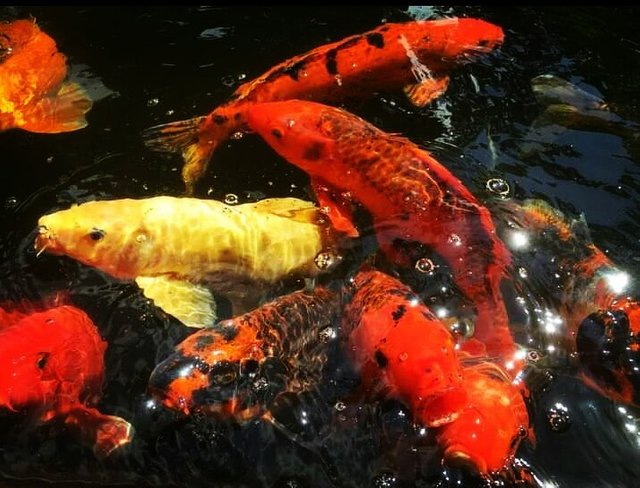
Goldfish (Cyprinus carpio) are imported to Indonesia from Europe and China. According to historical records, since 1860 the people of Ciamis, West Java, have mastered how to breed carp with the help of kakaban. A tool made of fibers for laying fertilized eggs. Carp cultivation is ideally carried out at an altitude of 150-1000 meters above sea level. The ideal temperature for the growth of carp is in the range of 20-25oC with a pH of 7-8.
Currently, the business of carp cultivation is divided into two segments, namely hatchery and grow-out businesses. The hatchery business produces fish seeds for further rearing. The market share of the hatchery business is fish farmers who are engaged in the enlargement business. While the enlargement business produces fish of consumption size, the market share is the final consumer.
Carp hatchery
To start a goldfish cultivation business, the first thing that must be prepared is to choose seeds or prospective brooders. Candidates for this breed must be made from offspring that have superior characteristics. This results in high yielding seeds. Prospective carp broodstock are kept in nursery ponds, separated between male and female brooders. Separation was carried out until both broodstock were ready to spawn. The process of spawning or mating carp is done in a special pond. The pool must be equipped with kakaban, a place to attach
fertilized eggs.
To find out more details about how to breed carp, please read our previous review about carp hatchery. Carp enlargement
The seeds used in carp cultivation are usually 10-12 cm in size or weigh about 80-100 grams per head. The size of the seed of this size is expected to be strong enough to be raised. So the risk of failure can be reduced. The length of carp rearing ranges from 2-3 months.
Carp cultivation can be done in various techniques such as the fast water method, calm water or intercropping. The medium or the place can be in the form of earthen ponds, wall ponds, tarpaulin ponds, rice fields, cages and floating nets.
a. Ground pool (calm water)
Most of the farmers cultivate goldfish in calm water ponds with an earthen floor. Soil pools are widely used because of how easy it is to make and the cost of making it is cheap, please see how to make an earthen pool. There are two types of earthen ponds, namely earthen ponds with earthen embankments and earthen ponds with wall or stone embankments. Soil ponds have the advantage of being able to provide natural food for fish. Various organisms other than fish, such as worms or aquatic plants can thrive at the bottom of the pond. This type of pond helps reduce feed costs.
The following are the preparation steps for carp cultivation in soil ponds:
: Before the pool is used, do first plowing the bottom of the pool, drying, liming, fertilizing and waterlogging. This preparation takes 1-2 weeks, depending on the weather when the pool is drying. For details, please read the preparation of soil ponds for fish cultivation. Use goldfish seeds measuring 100 grams per fish. The capacity of the soil pond for carp cultivation is 1-2 fish/m2. Give the main feed in the form of pellets with a protein content of 25%. The dose of feeding as much as 3-4% of the weight of the fish. For example, for fish weighing 100 grams, feed 3-4 grams of pellets per head per day. If we plant 1000 fish, it means that we need 3-4 kg of feed per day. Frequency of feeding 3 times a day, given in the morning, afternoon and evening
. Every 2 weeks do the body weight of the goldfish. Take a few tails at random, weigh them. Then adjust the amount of feed given. Within 3 months, the weight of the fish will increase to about 300-400 grams per head. With this size the fish can be harvested. If it continues to be maintained, the cost of feed becomes uneconomical unless the price is offered by a higher selling price for fish.
b. rushing pool
The swift water pond is a place for fish cultivation with fast water circulation. To make a swift pool of water required large water discharge and strong currents. The advantage of cultivating goldfish in swift water ponds is that the fish will continue to move so that their appetite is large. In addition, dissolved oxygen levels in swift water ponds are relatively higher. So that the swift water pond has a larger fish stocking density than the calm water pond. The area of the swift water pool is usually small, not as large as a calm water pool. The land or pool area is divided into small pond sizes so that the water flow can remain strong. The depth of the pool is made deeper than the calm water pool. The pool walls are made of walls to prevent erosion due to water erosion.
The following are things that must be considered in the cultivation of goldfish in swift water ponds:
Fast water pools require a large water discharge of about 25-100 liters/second. Make sure the water source remains smooth. Use fish seeds